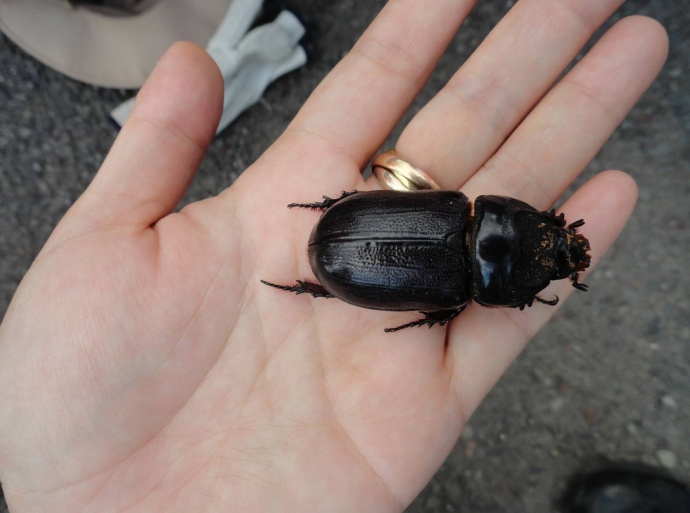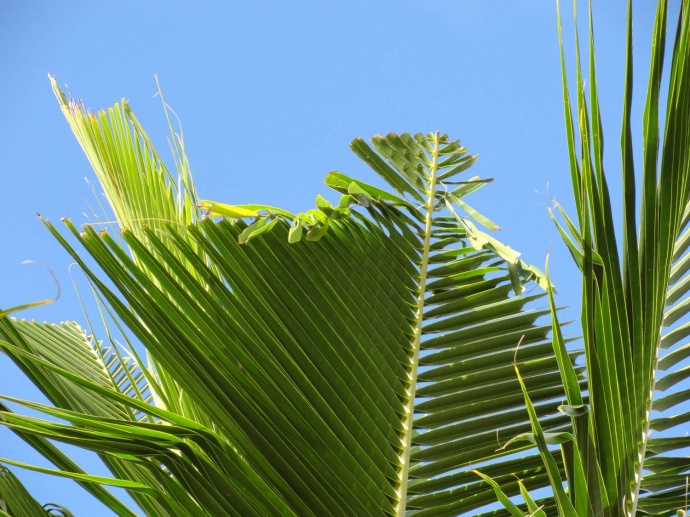Invasive Pest Found on Hawaiʻi Coconut Trees

An adult Coconut Rhinoceros Beetle can grow up to an impressive 2 ½ inches long. Photo courtesy, Hawaiʻi Department of Agriculture.
By Maui Now Staff
The state Department of Agriculture has confirmed the discovery of an invasive beetle on Oʻahu that can cause destructive damage to coconut trees and other palm plants.
Since the Coconut Rhinoceros Beetle was detected at Joint Base Pearl Harbor-Hickam on Dec. 23, 2013, officials say a total of nine adult beetles have been trapped.
Crews from the state and federal agricultural departments have been working jointly with the University of Hawaiʻi and the military to survey and trap the beetles. The extent of the infestation has not yet been determined.

Coconut Rhinoceros Beetle feeding damage. As they bore into the crown, they “cut through developing leaves, causing damage to the fronds, resulting in V-shaped cuts.” Photo courtesy, Hawaiʻi Department of Agriculture.
An adult beetle can grow up to an impressive 2 ½ inches long, and causes damage to palms by, “boring into the center of the crown where they injure young, growing tissue and feed on the sap.”
Agricultural officials say the beetle is native to the Asian tropics and is a major pest in India, the Philippines, Fiji, American Samoa, Guam, among other areas.
“The threat of the coconut rhinoceros beetle has been a growing concern in Hawaiʻi since it turned up in Guam in 2007,” said Dr. Neil Reimer, administrator for HDOA’s Plant Industry Division in an agency press release.
“We have initiated the strong, coordinated efforts among HDOA, USDA, UH and other partners that will be required to effectively manage this invasive pest,” said Dr. Reimer.
Agricultural officials note that the discovery of the Coconut Rhinoceros Beetle coincidentally occurred on the same day that the Little Fire Ant was discovered on hāpuʻu tree ferns at a garden shop on Maui and subsequently confirmed on Oʻahu.
Suspected Coconut Rhinoceros Beetle discoveries made on any island should be reported to the state Agricultural Department’s toll-free Pest Hotline at 643-PEST (7378).








